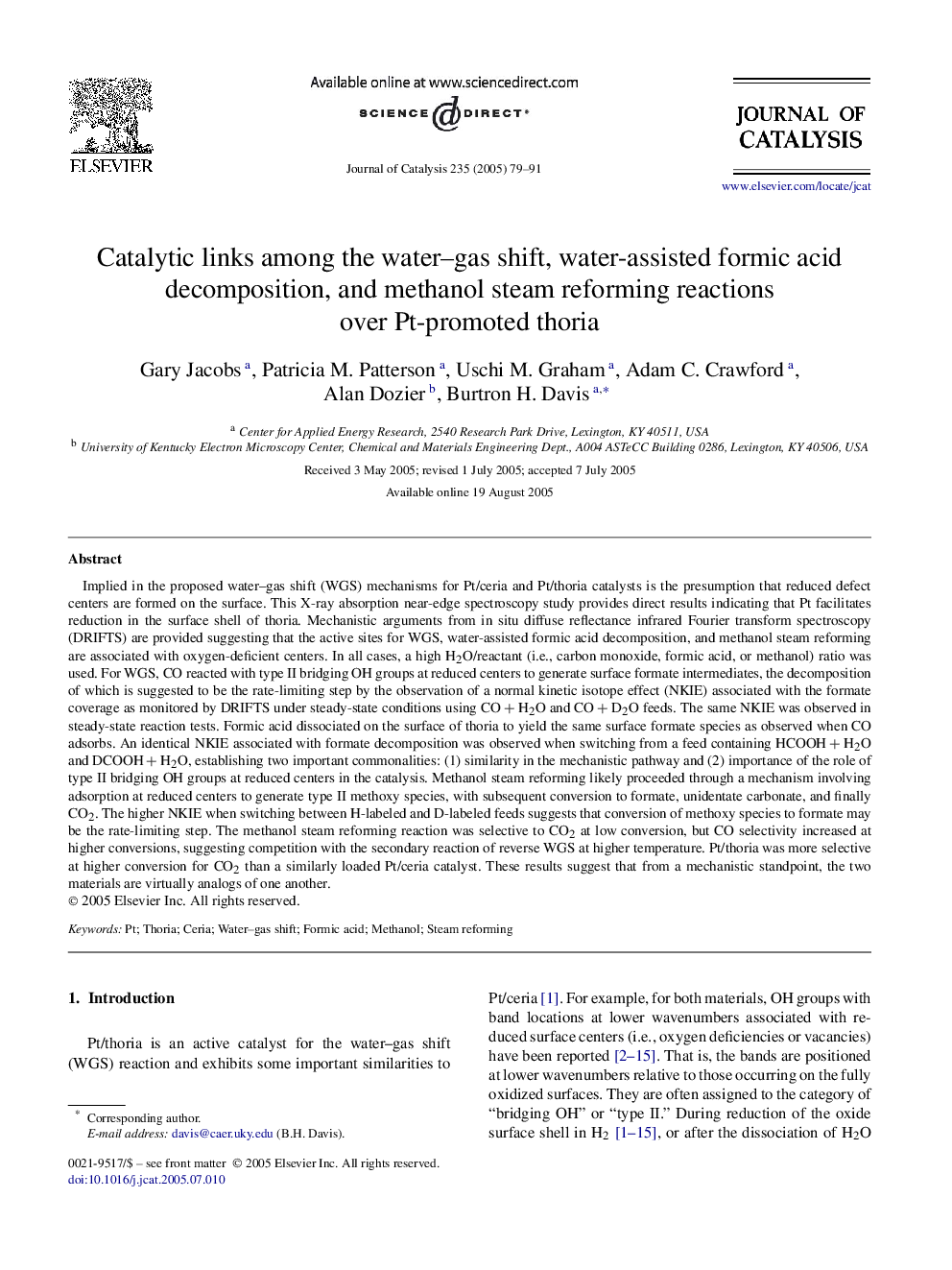| کد مقاله | کد نشریه | سال انتشار | مقاله انگلیسی | نسخه تمام متن |
|---|---|---|---|---|
| 10244557 | 47694 | 2005 | 13 صفحه PDF | دانلود رایگان |
عنوان انگلیسی مقاله ISI
Catalytic links among the water-gas shift, water-assisted formic acid decomposition, and methanol steam reforming reactions over Pt-promoted thoria
دانلود مقاله + سفارش ترجمه
دانلود مقاله ISI انگلیسی
رایگان برای ایرانیان
کلمات کلیدی
موضوعات مرتبط
مهندسی و علوم پایه
مهندسی شیمی
کاتالیزور
پیش نمایش صفحه اول مقاله

چکیده انگلیسی
Implied in the proposed water-gas shift (WGS) mechanisms for Pt/ceria and Pt/thoria catalysts is the presumption that reduced defect centers are formed on the surface. This X-ray absorption near-edge spectroscopy study provides direct results indicating that Pt facilitates reduction in the surface shell of thoria. Mechanistic arguments from in situ diffuse reflectance infrared Fourier transform spectroscopy (DRIFTS) are provided suggesting that the active sites for WGS, water-assisted formic acid decomposition, and methanol steam reforming are associated with oxygen-deficient centers. In all cases, a high H2O/reactant (i.e., carbon monoxide, formic acid, or methanol) ratio was used. For WGS, CO reacted with type II bridging OH groups at reduced centers to generate surface formate intermediates, the decomposition of which is suggested to be the rate-limiting step by the observation of a normal kinetic isotope effect (NKIE) associated with the formate coverage as monitored by DRIFTS under steady-state conditions using COÂ +Â H2O and COÂ +Â D2O feeds. The same NKIE was observed in steady-state reaction tests. Formic acid dissociated on the surface of thoria to yield the same surface formate species as observed when CO adsorbs. An identical NKIE associated with formate decomposition was observed when switching from a feed containing HCOOHÂ +Â H2O and DCOOHÂ +Â H2O, establishing two important commonalities: (1) similarity in the mechanistic pathway and (2) importance of the role of type II bridging OH groups at reduced centers in the catalysis. Methanol steam reforming likely proceeded through a mechanism involving adsorption at reduced centers to generate type II methoxy species, with subsequent conversion to formate, unidentate carbonate, and finally CO2. The higher NKIE when switching between H-labeled and D-labeled feeds suggests that conversion of methoxy species to formate may be the rate-limiting step. The methanol steam reforming reaction was selective to CO2 at low conversion, but CO selectivity increased at higher conversions, suggesting competition with the secondary reaction of reverse WGS at higher temperature. Pt/thoria was more selective at higher conversion for CO2 than a similarly loaded Pt/ceria catalyst. These results suggest that from a mechanistic standpoint, the two materials are virtually analogs of one another.
ناشر
Database: Elsevier - ScienceDirect (ساینس دایرکت)
Journal: Journal of Catalysis - Volume 235, Issue 1, 1 October 2005, Pages 79-91
Journal: Journal of Catalysis - Volume 235, Issue 1, 1 October 2005, Pages 79-91
نویسندگان
Gary Jacobs, Patricia M. Patterson, Uschi M. Graham, Adam C. Crawford, Alan Dozier, Burtron H. Davis,